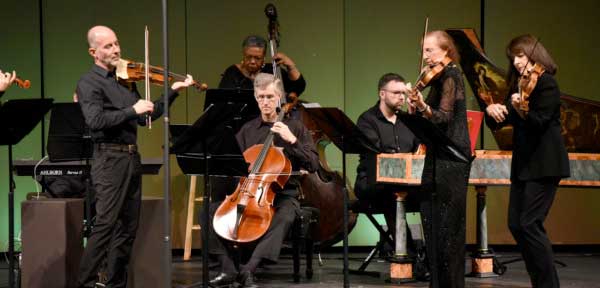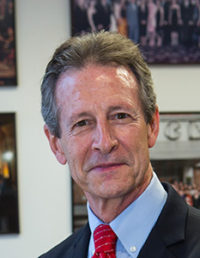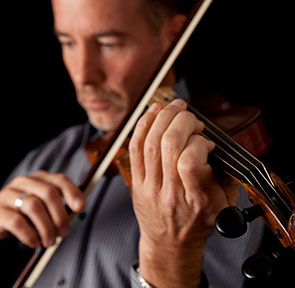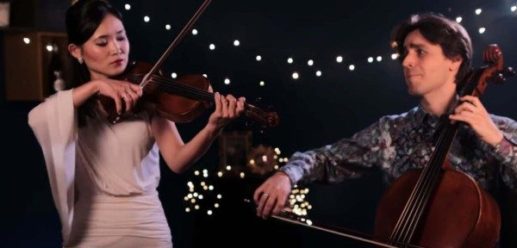BACH BRANDENBURG CONCERTOS 3, 5, 6
Wednesday, June 8, 2022 | 7:30 PM
First Presbyterian Church
2408 N. Navarro St.
Performed without intermission.
JOHANN SEBASTIAN BACH (1685–1750)
Concerto No. 5 in D Major, BWV 1050
for flute, violin, harpsichord and strings
- Allegro
- Affettuoso
- Allegro
SOLO
Marcus McGuff, flute
Stephen Redfield, violin
Keith Womer, harpsichord
RIPIENO
Joan Carlson, violin
Suzanna Giordano-Gignac, viola
Chris Haritatos, violoncello
Melanie Punter, violone
Concerto No 6 in B-flat Major, BWV 1051
for two violas, cello, two bass viols and continuo
- [no tempo indication]
- Adagio, ma non tanto
- Allegro
Suzanna Giordano-Gignac, viola
Melissa Brewer,viola
Chris Haritatos, violoncello
Barry Sills, bass viol
Eric Taeyang Mun, bass viol
Melanie Punter, violone
Keith Womer, harpsichord
Concerto No. 3 in G Major, BWV 1048
for three violins, three violas, three cellos and continuo
- [no tempo indication]
- Adagio
- Allegro
Stephen Redfield, violin
Boel Gidholm, violin
Bruce Colson, violin
Suzanna Giordano-Gignac, viola
Melissa Brewer, viola
Jann Cosart, viola
Chris Haritatos, violoncello
Barry Sills, violoncello
Eric Taeyang Mun, violoncello
Melanie Punter, violone
Keith Womer, harpsichord

Learn before you listenJoin us at 6:45 p.m. for a pre-concert talk with George Stauffer, Distinguished Professor of Music History at Rutgers University’s Mason Gross School of the Arts. |
 |
Sponsors
Gary Childress
This concert is generously supported by our concert sponsors and by donors to the Victoria Bach Festival’s Annual Fund. Many thanks to our generous supporters!
A trendy new musical form was rapidly gaining ground in the glittering capitals of France and Italy during the early 18th century: the concerto. After Italian composers of the Guarneri and Stradivarius era developed the concept of contrast between a large group—the orchestra—and a soloist or chamber group, concertos caught fire among composers throughout Europe. The solo concerto remains prominent in orchestral repertoire, but the concerto grosso, featuring a small group accompanied by orchestra, found its peak in the 18th century.
Commissioned in 1721 by Christian Ludwig, Margrave of Brandenburg, each of Johann Sebastian Bach‘s six “Brandenburg” concertos has a different small group (concertino). Each has three movements ordered in the same form: fast, slow, fast. The typical concertino throughout the Baroque is the trio sonata ensemble, consisting of two treble instruments, like flutes, violins, oboes, recorders, and a harmonized bass line called the basso continuo. During the second movement, the concertino is often featured without the larger ensemble (ripieno, the same term used for the filling in ravioli). One other notable characteristic found in most Baroque concertos is the ritornello, a recurring refrain played by the ripieno after concertino sections.
Brandenburg No. 5 is traditional in all these senses, first highlighting a trio sonata ensemble—flute, violin, and harpsichord. The harpsichord, however, plays two roles. With the ripieno, it is simply the harmonizing instrument, part of the basso continuo. But with the concertino, it is the most featured instrument with elaborate figuration, showing the soloist’s virtuosity. For the second movement, the ripieno is completely tacet, and the last has one of the most well-known ritornellos of the concerto grosso era.
Brandenburg No. 6 is far more adventurous, with a concertino of two violas (Bach’s specialty after keyboard instruments), two bass viols, cello, violone, and harpsichord. During the slow middle movement, the bass viols are silent, leaving the concertino as a trio sonata ensemble with the two violas as treble, the cello and violone on the bass line, and the harpsichord for harmony.
This was a transitional time for the viola da gamba family, which differed from its newer cousins, the violin family, in having at least five strings and frets to aide finger placement. The violin family, also including violas, cellos, and basses, were louder, fitting more comfortably with the birth of both the orchestra and concert halls, which now had paid entry and were open to the public.
Because the cello and violone are on the same line, Bach uses a French technique of having one instrument, the cello in this case, playing a more decorative version of the bass line simultaneously with the violone. Certainly, the original title of these works, Six Concerts à plusieurs instruments [Six concertos for several instruments] confirms Bach’s French state of mind for these works, but the regular appearance of the violin, promoted by the Italians, confirms the traditional position of German composers, successfully blending French and Italian styles.
Brandenburg No. 3 has the largest concertino, but is the shortest of the six works, also with the shortest movement. Its second movement, Adagio, consists of only two chords. Modern performers either play the chords simply, elaborate briefly on them, or one of the concertino players improvises a more extensive solo cadenza. Sadly, the Margrave was not able to hear these concertos before his death, but fortunately, these joyful works are available for modern audiences.
–Dr. Yvonne Kendall, © 2022
–Dr. Yvonne Kendall, © 2021
Eighteenth Century Trends
A trendy new musical form was rapidly gaining ground in the glittering capitals of France and Italy during the early 18th century: the concerto. After Italian composers of the Guarneri and Stradivarius era developed the concept of contrast between a large group—the orchestra—and a soloist or chamber group, concertos caught fire among composers throughout Europe. The solo concerto remains prominent in orchestral repertoire, but the concerto grosso, featuring a small group accompanied by orchestra, found its peak in the 18th century.
Commissioned in 1721 by Christian Ludwig, Margrave of Brandenburg, each of Johann Sebastian Bach‘s six “Brandenburg” concertos has a different small group (concertino). Each has three movements ordered in the same form: fast, slow, fast. The typical concertino throughout the Baroque is the trio sonata ensemble, consisting of two treble instruments, like flutes, violins, oboes, recorders, and a harmonized bass line called the basso continuo. During the second movement, the concertino is often featured without the larger ensemble (ripieno, the same term used for the filling in ravioli). One other notable characteristic found in most Baroque concertos is the ritornello, a recurring refrain played by the ripieno after concertino sections.
Brandenburg No. 5 is traditional in all these senses, first highlighting a trio sonata ensemble—flute, violin, and harpsichord. The harpsichord, however, plays two roles. With the ripieno, it is simply the harmonizing instrument, part of the basso continuo. But with the concertino, it is the most featured instrument with elaborate figuration, showing the soloist’s virtuosity. For the second movement, the ripieno is completely tacet, and the last has one of the most well-known ritornellos of the concerto grosso era.
Brandenburg No. 6 is far more adventurous, with a concertino of two violas (Bach’s specialty after keyboard instruments), two bass viols, cello, violone, and harpsichord. During the slow middle movement, the bass viols are silent, leaving the concertino as a trio sonata ensemble with the two violas as treble, the cello and violone on the bass line, and the harpsichord for harmony.
This was a transitional time for the viola da gamba family, which differed from its newer cousins, the violin family, in having at least five strings and frets to aide finger placement. The violin family, also including violas, cellos, and basses, were louder, fitting more comfortably with the birth of both the orchestra and concert halls, which now had paid entry and were open to the public.
Because the cello and violone are on the same line, Bach uses a French technique of having one instrument, the cello in this case, playing a more decorative version of the bass line simultaneously with the violone. Certainly, the original title of these works, Six Concerts à plusieurs instruments [Six concertos for several instruments] confirms Bach’s French state of mind for these works, but the regular appearance of the violin, promoted by the Italians, confirms the traditional position of German composers, successfully blending French and Italian styles.
Brandenburg No. 3 has the largest concertino, but is the shortest of the six works, also with the shortest movement. Its second movement, Adagio, consists of only two chords. Modern performers either play the chords simply, elaborate briefly on them, or one of the concertino players improvises a more extensive solo cadenza. Sadly, the Margrave was not able to hear these concertos before his death, but fortunately, these joyful works are available for modern audiences.
–Dr. Yvonne Kendall, © 2022
About the Artists

Violinist Stephen Redfield has performed as concertmaster and soloist with the Victoria Bach Festival since 1992. Honored as “Best Instrumentalist of 2018-19” by the Austin Critics Table, he was a student of Dorothy DeLay at the Cincinnati College-Conservatory and Donald Weilerstein at the Eastman School.
He was, until his retirement in June, Professor of Violin at the University of Southern Mississippi, but will now be devoted to his active schedule as a soloist and chamber musician, in the United States and internationally. It was with mixed emotions that he left Hattiesburg, his position of 26 years, his faculty piano trio, and his many students, but Stephen is excited to broaden his performing career from his new home in Santa Fe. His connection to Victoria came from his time in Austin, where he received his doctorate and was Assistant Concertmaster of the Austin Symphony, as well as from his long (and continuing) collaboration with Craig Hella Johnson.
Over his 40 years with the Oregon Bach Festival, Stephen has participated in numerous recordings, including the Grammy® Award-winning disc Credo. He is also concertmaster of Santa Fe Pro Musica, the Arizona Bach Festival, the Conspirare Company of Voices and La Follia Austin Baroque.
See our full 2022 artist list for additional biographical information.
About the Speaker





